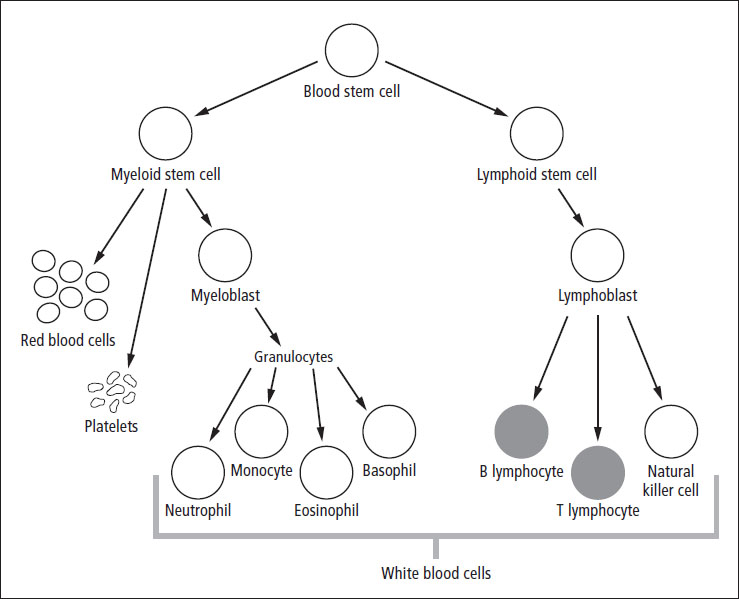Childhood Leukemia
ALL Is a Blood Disease
ALL is cancer of the lymphocytes (see Figure 3–1). A normal lymphoid stem cell matures into one of three types of white blood cells (WBCs):
- B lymphocytes that make antibodies to fight infection
- T lymphocytes that help the body fight infection and disease
- Natural killer cells that kill cancer cells or viruses
In 85% of children with ALL, B lymphocytes become cancerous. In the other 15% of children with ALL, T lymphocytes become cancerous. The cancer cells multiply rapidly and have no ability to develop into mature WBCs. After accumulating in the bone marrow, cancerous lymphocytes (called leukemic blasts) spill over into the blood and enlarge the liver, spleen, and lymph nodes. If left unchecked, the cancerous cells can invade the central nervous system (CNS)—which includes the brain and spinal cord—and other organs, such as testes in boys.

Figure 3–1: ALL is a disease of B or T lymphocytes
When leukemic blasts begin to multiply and pack the bone marrow, fewer normal red blood cells (RBCs), platelets, and WBCs are produced. As the number of normal blood cells decreases, symptoms appear. Low RBC counts cause fatigue and pale skin. Low platelet counts may result in bruising and bleeding problems. If healthy WBCs are crowded out by blasts, the child will have little or no defense against infections. To read more about blasts, blood, and genetics, see Chapter 2, Overview of Childhood Leukemia.
Table of Contents
All Guides- Introduction
- 1. Diagnosis
- 2. Overview of Childhood Leukemia
- 3. Acute Lymphoblastic Leukemia
- 4. Acute Myeloid Leukemia
- 5. Juvenile Myelomonocytic Leukemia
- 6. Chronic Myelogenous Leukemia
- 7. Telling Your Child and Others
- 8. Choosing a Treatment
- 9. Coping with Procedures
- 10. Forming a Partnership with the Medical Team
- 11. Hospitalization
- 12. Central Venous Catheters
- 13. Chemotherapy and Other Medications
- 14. Common Side Effects of Treatment
- 15. Radiation Therapy
- 16. Stem Cell Transplantation
- 17. Siblings
- 18. Family and Friends
- 19. Communication and Behavior
- 20. School
- 21. Sources of Support
- 22. Nutrition
- 23. Insurance, Record-keeping, and Financial Assistance
- 24. End of Treatment and Beyond
- 25. Relapse
- 26. Death and Bereavement
- Appendix A. Blood Tests and What They Mean
- Appendix B. Resource Organizations
- Appendix C. Books, Websites, and Support Groups

